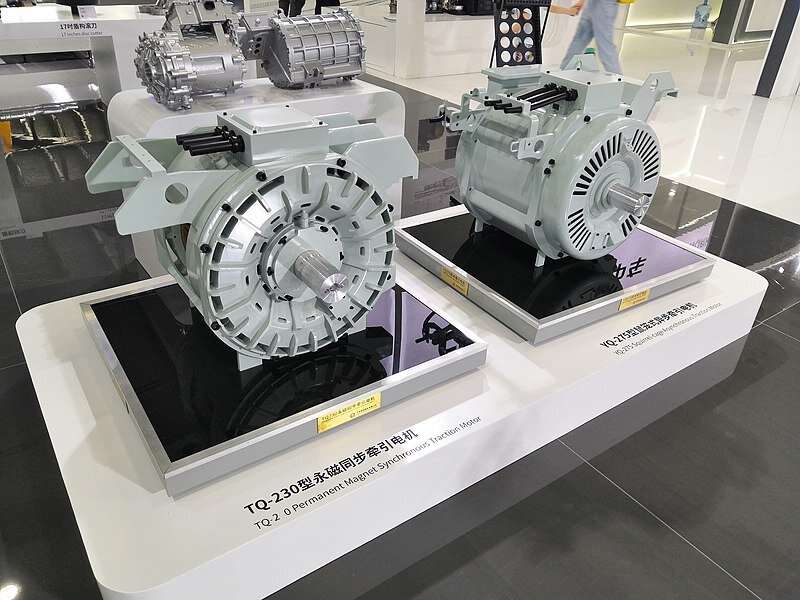The most promising control scheme for permanent magnet synchronous motors
Electrical machines consume nearly half of all the electrical power generated worldwide, making them one of the top contributors to carbon dioxide emissions. If we are to develop sustainable societies, we must, therefore, make sure that the electric motors we rely on are highly efficient and reliable.
The world of electric motors is, however, vast and varied. Permanent magnet synchronous motors (PMSMs) offer some key advantages over competing technologies owing to their small size, efficiency, and high power factor. These qualities have earned PMSMs a place in electric vehicle drive systems, high-speed trains, electric ship propulsion, and high-end numeric control machining systems, among other applications.
For PMSMs to operate as intended, employing an appropriate control strategy is as important as the motor parts themselves. In this regard, model predictive control (MPC) is the most appealing strategy today. Put simply, MPC involves having a mathematical model of the dynamic process that one intends to control and using the predictions of this model to adjust the control signals. The MPC approach allows one to keep a PMSM operating within a desired set of constraints while taking advantage of well-established models of power converters and transmission systems.
In particular, the finite-control-set MPC (FCS-MPC) strategy is one of the more intuitive and simple ways to implement MPC in PMSMs, and has become a hotspot in MPC research. However, there are still many challenges in FCS-MPC that still need to be addressed before this control scheme can unlock the full potential of PMSMs.
To this end, a team of researchers led by Professor Xiaodong Sun of Jiangsu University, China, has recently published a review article in IEEE/CAA Journal of Automatica Sinica in September 2022. In it, they explain the basic principles of FCS-MPC, its drawbacks along with modern techniques developed to mitigate them, and future research directions.
Some of the more prominent challenges in FCS-MPC applied to PMSMs are the computational complexity and delay associated with the predictions of the underlying model and the optimization algorithm that determines the appropriate value for the control signals. Moreover, FCS-MPC calculations rely on multiple model parameters that have to be precisely set for the predictions to be meaningful.
The article starts off by tackling the challenges and potential solutions aimed at making FCS-MPC operation more robust against parameter uncertainties and fluctuations as well as external disturbances. Some studies have focused on estimating possible disturbances and compensating them, while others have tried to eliminate the effect of parameter fluctuations through new twists on prediction models, such as the no-parameter predictive model or the online parameter identification approach.
The article also covers the latest progress made on reducing the computational burden of FCS-MPC. The authors describe other attractive schemes to improve performance, such as the multi-vector FCS-MPC strategy, compensating the delay introduced by MPC calculations, and adjusting the weighing factor applied to the variables that the system must control, which implements an idea of priority.
Finally, the article outlines several important research directions to enable the application of FCS-MPC in PMSMs. One of them is the multi-step control strategy, which can greatly reduce switching losses and make the overall system more efficient. Another involves advancing the important parts of the theory of FCS-MPC, such as stability analysis, as well as exploring new ways to combine different control schemes together for better performance.
In this regard, Professor Sun says, “The recent vigorous development of new methods makes it possible for PMSM drive systems to combine solutions, such as fault-tolerant control and sensor-less control, in practical applications. Further research will be needed to explore the combination of these methods for better results.”
In summary, improving MPC techniques could help us operate PMSMs more efficiently in any given context, no matter how difficult the operating conditions are. In turn, this would translate into social benefits on various fronts, as Professor Sun explains: “Model predictive control is aimed at solving control problems with optimization requirements. Therefore, with the deepening of MPC research, people’s lives will become more economical, safe, and environmentally friendly.”
Robust predictive speed control for surface-mounted permanent magnet synchronous motor systems
Teng Li et al, Finite-control-set model predictive control of permanent magnet synchronous motor drive systems—An overview, IEEE/CAA Journal of Automatica Sinica (2022). DOI: 10.1109/JAS.2022.105851
Provided by
Chinese Association of Automation
Citation:
The most promising control scheme for permanent magnet synchronous motors (2022, October 18)
retrieved 18 October 2022
from https://techxplore.com/news/2022-10-scheme-permanent-magnet-synchronous-motors.html
This document is subject to copyright. Apart from any fair dealing for the purpose of private study or research, no
part may be reproduced without the written permission. The content is provided for information purposes only.
For all the latest Technology News Click Here
For the latest news and updates, follow us on Google News.

